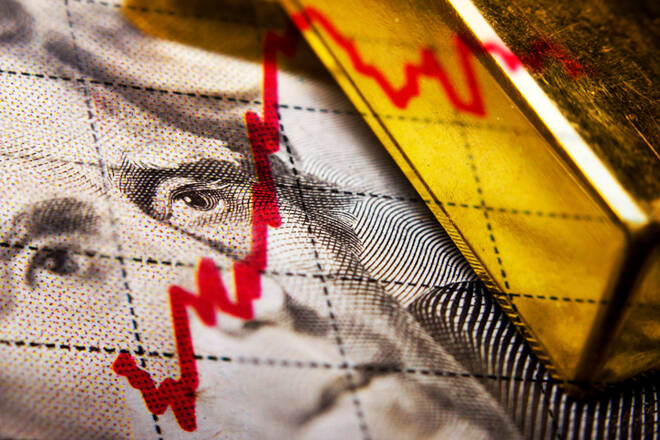Advertisement
Advertisement
Price of Gold Fundamental Weekly Forecast – Prepare for Trade Deal Related Volatility…Whether On or Off
By:
The U.S. stock markets at record highs and positive comments from U.S. officials that progress is being made on the “phase one” trade agreement with China are likely to continue to keep a lid on gold prices and could even drive prices through recent lows.
Gold futures finished a volatile week with a slightly better close, but the precious metal/investment/safe-haven asset, continues to look vulnerable to the downside in the wake of positive news over U.S.-China trade relations late in the week.
Last week’s price action didn’t reveal any surprises. Shorts-covered after the previous week’s steep sell-off when the headlines said trade talks had hit a snag. Short-sellers returned when U.S. officials said a trade deal was close. In between, gold was pressured after the Reserve Bank of New Zealand (RBNZ) surprised the markets again by putting a rate cut on hold. But gold found support a couple of days later when weaker-than-expected Australian employment data suggested the Reserve Bank of Australia (RBA) may lower rates again in December.
Last week, December Comex gold futures settled at $1468.50, up $5.60 or +0.38%.
Economic data also played a role in gold’s two-sided trade. Helping to keep a lid on prices was stronger-than-expected U.S. consumer and producer inflation. Providing a little boost was mixed U.S. retail sales data.
Federal Reserve Chairman Jerome Powell also dampened the chances of a breakout rally in gold after he said the central bank is unlikely to adjust interest rates anytime soon as long as the economy remains on its present path.
“We see the current stance of monetary policy as likely to remain appropriate as long as incoming information about the economy remains broadly consistent with our outlook of moderate economic growth, a strong labor market, and inflation near our symmetric 2 percent objective,” Powell said in prepared remarks.
“Looking ahead, my colleagues and I see a sustained expansion of economic activity, a strong labor market, and inflation near our symmetric 2 percent objective as most likely,” Powell said in his remarks on November 13. “This favorable baseline partly reflects the policy adjustments that we have made to provide support for the economy.”
While Powell’s comments were pressuring gold prices, global economic data and events were propping it up.
Gold was supported as protests in Hong Kong turned violent last week, heightening an already volatile situation days after a group of pro-democracy lawmakers was arrested in the city.
Traders also bought gold in response to a report that showed growth in Japan’s economy ground to a near standstill in the third quarter, at its weakest in a year, as the U.S.-China trade war and soft global demand knocked exports and kept pressure on policymakers to ramp up stimulus in order to bolster a fragile recovery, according to the Japan Times.
Gold was also underpinned by a report that showed China’s industrial output grew significantly slower than expected in October, as weakness in global and domestic demand and the drawn-out Sino-U.S. trade war weighed on activity in the world’s second largest economy.
Gold was further supported after disappointing October jobs data raised the chances of another rate cut by the Reserve Bank of Australia (RBA) in the coming months.
Weekly Forecast
The U.S. stock markets at record highs and positive comments from U.S. officials that progress is being made on the “phase one” trade agreement with China are likely to continue to keep a lid on gold prices and could even drive prices through recent lows.
However, weak global economic data, falling Treasury yields and general uncertainty over the timing of a trade deal could continue to underpin gold prices.
The RBA minutes could provide support if they come across as dovish. However, the Federal Reserve minutes are expected to be hawkish. The ECB policy minutes will be closely watched and could ultimately decide which way the wind blows for gold prices.
Flash PMI data from the Euro Zone and the United States could also influence the price action.
With traders taking protection in the safe-haven Japanese Yen, U.S. Treasury Bonds and gold, and investors aggressively driving U.S. stock markets to record highs, something has to give. Therefore, the longer gold stays in a tight trading range, the greater the chances of a volatile breakout. The direction will be determined by the outcome of the trade deal.
About the Author
James Hyerczykauthor
James Hyerczyk is a U.S. based seasoned technical analyst and educator with over 40 years of experience in market analysis and trading, specializing in chart patterns and price movement. He is the author of two books on technical analysis and has a background in both futures and stock markets.
Did you find this article useful?
Latest news and analysis
Advertisement
